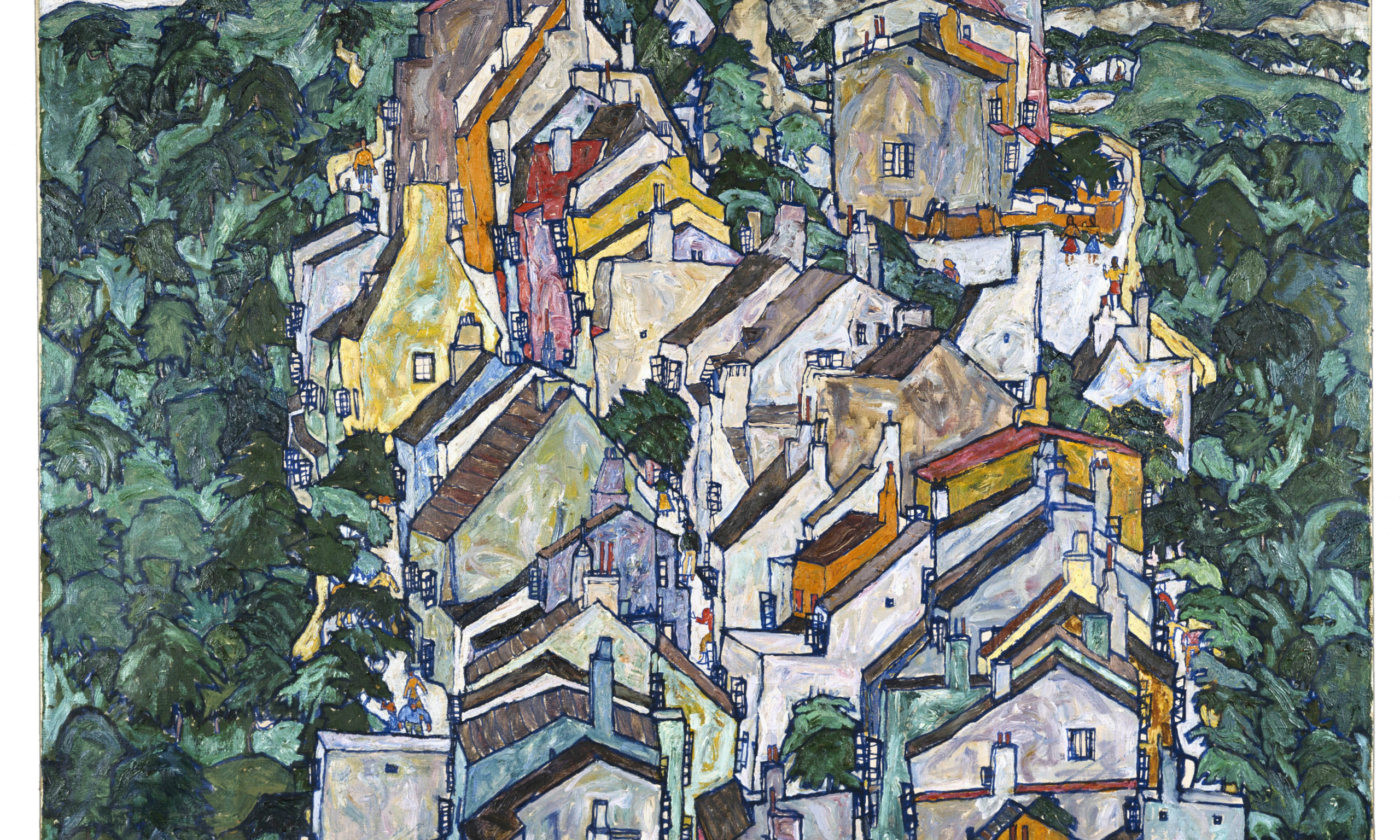Egon Schiele’s Town among Greenery (The Old City III) (1917) Courtesy of Neue Galerie New York
The Neue Galerie in New York is to restore Egon Schiele’s Town Among Greenery (The Old City III) (1917) thanks to the 2023 Tefaf Museum Restoration Fund, which has awarded €25,000 to the project.
The painting was gifted to the museum in 2006 by the heirs of Otto and Marguerite Manley (formerly Mandl), important Jewish collectors who fled to the US from Vienna shortly after their marriage in 1937. Unable to arrange for an export until after the Second World War, the Viennese authorities finally agreed to ship the painting to the Manleys in 1948 on the condition that it be included in the Austrian pavilion at the Venice Biennale that year.
Considered one of Schiele’s most significant landscapes, the oil on canvas was among his last paintings completed before his death on 31 October 1918 after contracting Spanish flu. Bushy greenery either side of the composition frames an elevated view of a Medieval townscape—probably an interpretation of the Austrian city of Krumau, his mother’s birthplace. An unusual addition, the town is populated with small figures, and the restoration will support a study to determine why he added figures to select pictures toward the end of his career. As Renée Price, the director of the Neue Galerie says: “Egon Schiele completed Town among Greenery about a year before his death, and it is an exceptional and unusual example of the Austrian Expressionist's landscape paintings.” Conservation work will also stabilise the surface of the painting.
Michaelina Wautier’s Two Girls as Saints Agnes and Dorothea (around 1650) Courtesy of Royal Museum of Fine Arts Antwerp
A further €25,000 will also go to the Royal Museum of Fine Arts Antwerp (KMSKA) in Belgium, which is using the Tefaf funds to restore Michaelina Wautier’s Two Girls as Saints Agnes and Dorothea (around 1650), a work the gallery has had in its possession since 1910.
As was common for female Old Masters, and even though Wautier was held in high regard during her lifetime, the painting was initially attributed to an anonymous Master before being attributed to Thomas Willeboirts Bosschaert. It was not until 2003 that the art historian Pierre-Yves Kairis proved on stylistic grounds it was by Wautier.
Carmen Willems, the general director of KMSKA, says: “In the 17th century Michaelina Wautier made a name for herself as an artist of widely varied genres. She did not limit herself to classically feminine subjects such as still life or portraits. Since the early 2000s, Wautier has begun to regain renown. It is only natural that she is also prominently displayed in the museum among works by her contemporaries."
The museum will also restore Wautier's Portrait of a Young Man. "Treating works by the same artist at the same time has previously proven to add value to research and restoration projects,” Willems says.

